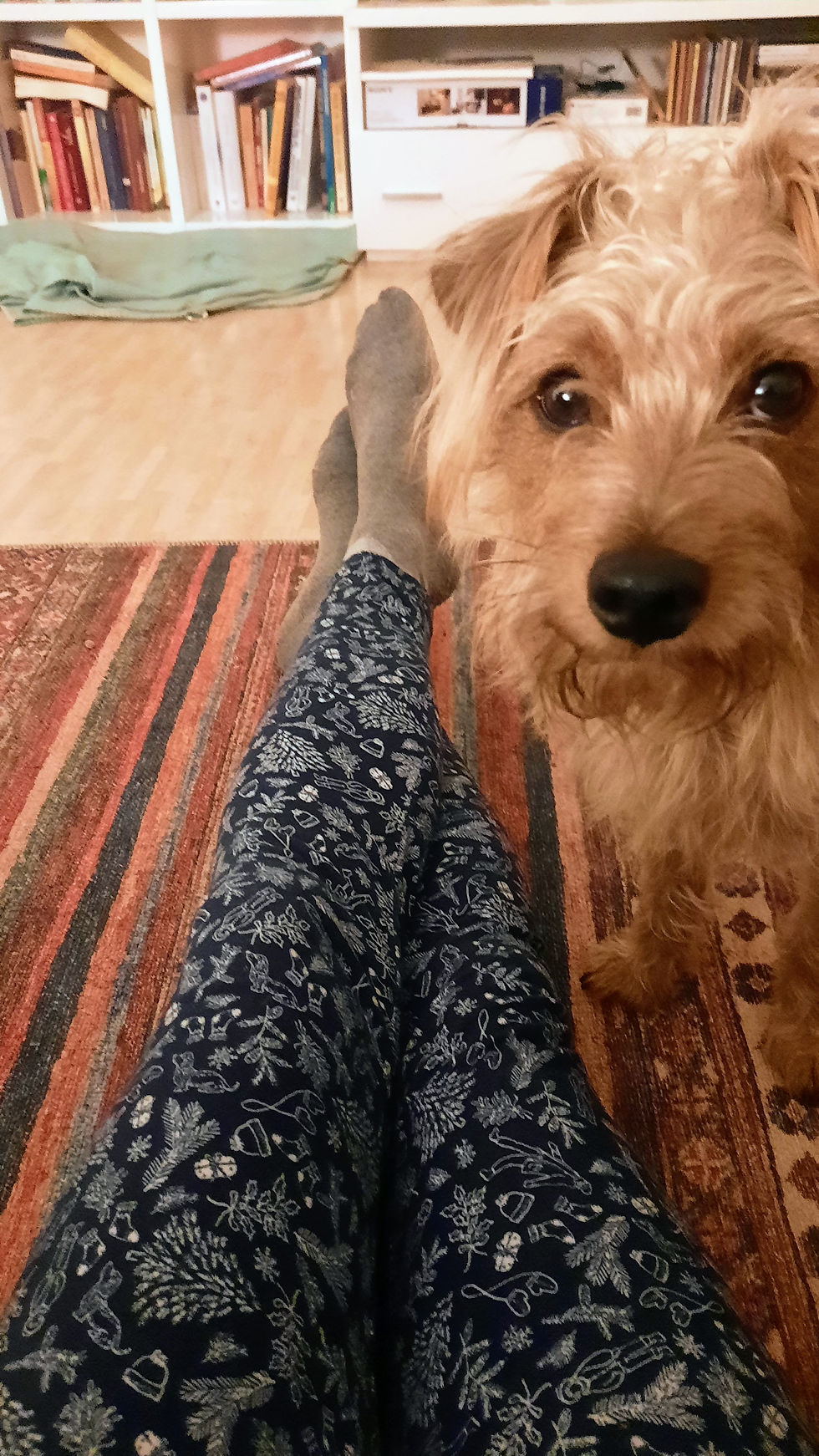A Plea for the Banished Ones
- Karin Szivacsek
- Aug 10
- 4 min read
"I was never looking for the right words or emotions. I am looking for the kind of silence within that would not judge the 'wrong ones'."
In a world full of "quick fixes" and coaching promises like “Finally be free from sadness” or “A meditation against your fear”, I want to make a plea—for what we usually want to get rid of: our emotions.
Our so-called darkness.
The parts of us that scream, cry, and tremble in fear.
This text does not arise from a neutral place. It’s a very personal one.
I feel a lemon-face reaction show up when I’m confronted with these glossy promises. I feel my body contract—in an inner resistance that simply says no. And I know how easily I myself keep falling into these shortcuts. But my body won’t go along.
I was recently ill. Not seriously, but clearly. My strong immune system no longer responded as usual. At first, I was just lying there, unable to form a single thought or do anything at all—and in that vast nothingness, one thing remained: feeling.
And suddenly it arrived—rage. So fierce, I didn’t recognise myself. Irritability. Fear. Agitation. Symptoms, as if they were trying to tell me something. And they were. I’ve—again—learned to listen. Moment by moment. This text is part of that listening.
I was lucky. From the age of fourteen until my early forties, I trained in martial arts—first semi-contact kickboxing, later Muay Thai. These were safe spaces where I could meet and work with the powerful energy of anger and aggression. Especially as girls or women, certain emotions—energy in motion—are often declared “unfeminine” or “inappropriate.” The same way boys and men are told “Don’t cry,” girls are told to be “good” and “nice,” which often means suppressing natural forces that are evolutionary keys to our survival and deeply wired into our nervous system.
In those mixed classes I attended and later leading girls-only classes, we would agree on safe boundaries with our training partners. Within that container, I could touch, connect to, and channel vital life force through my body. The impact went far beyond the gym. I felt more balanced in daily life, more confident, less afraid. I knew my strength, but also my limits. I knew I would run if I could—but if I couldn’t, I knew how to fight. That awareness (and perhaps the quiet strength it radiated) shifted how I moved in the world.
Whether in subways, parks, or other unsettling spaces, my body carried that quiet “I know” with it.
Aside from one incident in a club—when a man repeatedly crossed my boundaries—I never had to use the physical skills I’d learned.
I don’t practice martial arts anymore, except for weaving some “move the energy” Qi Gong into my yoga and movement classes. But the embodied presence remains: the willingness to meet whatever arises inside me, even when it’s not comfortable or “socially acceptable.”
My practice is softer now.
It goes straight into those unwanted parts, not to fight them but to feel them. To move with them. To sit with them.
The old tantric yogis knew—something that neuroscience (including Dr. Jill Bolte Taylor) now confirms: emotions, in their pure form, don’t last longer than ninety seconds in the body. It is only when we build a mental story around them that they loop endlessly.
So when an emotion surges, instead of pushing it away or turning it into a narrative, we can pause. Feel it fully. Let it move through.
We live in a time where there seems to be a “mind tool” for everything.
And when the tool doesn’t work? When we do not get rid of…something inside…in order to be a better self, or even the best version of ourselves?
Then you weren’t disciplined enough.
Didn’t think positively enough.
Didn’t visualise enough.
Didn’t generate enough “feelings of abundance.
In other words: It’s your own fault.
But that’s not how human experience works.
Emotions arise in older, pre-verbal regions of the brain like the limbic system or the amygdala.
Thinking—based in the prefrontal cortex—usually comes afterwards.Yet we still believe our thoughts are the centre of truth.But thoughts are only what we consciously notice.
Emotions that aren’t allowed to be felt will keep screaming—and show up as looping thoughts, inner restlessness, tightness or even illness.
More than that: What we see out there—wars, violence, collective conflict—grows from the same root as what happens in our families, our relationships, and in our own chests.
Pain that was never held.
Fear that was never given space.
Wounds that remained stored in the depths.
Imagine offering the same glossy tools to someone in Gaza—or to a Jewish survivor—with the words:“Let go of the past. With positive thinking, you can create a new life.”
It would not only be cynical—it would be a violation of dignity.
This spiral of violence—whether psychological, emotional, or physical—continues for as long as we try to escape.As long as we’d rather coach, improve, or “vibrate away” than hold, feel, and honour what is.

What if—rather than thinking it away—we simply felt?
Felt the body.
Let the pain, the fear, the anger, the shame be there.
Without a goal.
Without optimisation.
Like visitors coming to our guesthouse as Rumi so beautifully put it, welcoming them.
Some will be there just for a short trip, some will linger longer. Some will be entertaining, some annoying.
Let’s see which rooms they explore.
A tightness in the chest. A flicker in the belly. A scream stuck in the throat.
Hello.
Tending to what simply appears.
Just being.
Here.
Then perhaps we could stop fighting ourselves. Could stop fighting others.
And begin to truly feel alive.
A plea for our banished inner parts—and for a new form of healing:
Radically feeling. Radically truthful.


Comments